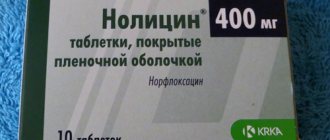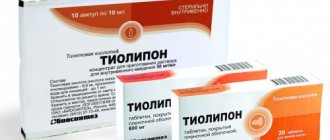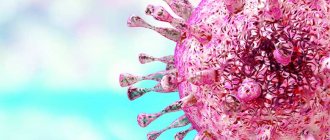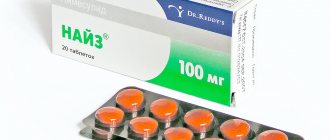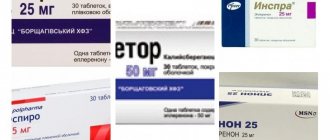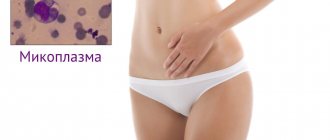Release form
Mycozoral tablets are white, a grayish or light cream tint is possible, marbling is allowed. The pills have a flat-cylindrical shape. The appearance features are expressed by chamfer and notch.
Do you think that nail fungus is primarily an aesthetic problem?
Not really
Each Mycozoral tablet contains 200 mg of ketoconazole. Pills are placed in blister packs of 10 pieces. The secondary packaging is cardboard packs, each of which contains 1-3 blisters.
Mycozoral price, where to buy
The price of Mycozoral depends on the form of release. In any case, its cost is considered very affordable. The price of Mycozoral tablets is approximately 350 rubles. The price of Mycozoral ointment is about 170 rubles. You can buy shampoo in the same way as tablets or ointment at the pharmacy. Its cost is considered very affordable compared to many expensive dandruff products. The price of Mikozoral shampoo is about 300 rubles.
- Online pharmacies in RussiaRussia
ZdravCity
- Shampoo Mycozoral medicinal Ketoconazole 2% 75 gVertex AO
RUB 211 order
Effect of the drug
Mycozoral is characterized by fungicidal and fungistatic activity. It manifests itself in relation to dermatophytes, yeast-like, higher and dimorphic fungi. A number of phycomycetes are less sensitive to the drug. The activity of the drug also extends to staphylococci and streptococci.
The mechanism of action of the drug is based on the suppression of ergosterol synthesis occurring in fungal membranes. This allows the permeability of cell walls to be disrupted, which leads to the death of pathogenic microorganisms. The drug also reduces the production of androgens.
Mycozoral is characterized by high absorption, which is enhanced by the acidic environment of the stomach. The level of bioavailability is affected by the dose taken. With a single oral dose of one tablet of the drug, the maximum concentration of the drug is observed for two hours.
The drug is eliminated from the plasma in two stages. The first takes 10 hours. During this time, the half-life of the substance takes 2 hours. In the second stage, this requires 8 hours.
There is a high connection with plasma proteins. There is a good distribution of the drug throughout the tissues and body fluids. The object of its penetration also becomes the cerebrospinal fluid and testicles, but therapeutic concentrations are not created. A small amount of the drug also passes through the placenta. It also passes into breast milk.
Metabolism of the drug occurs in the liver. In this case, inactive metabolites are formed in large quantities.
Drug interactions
If Mycozoral is used to treat seborrheic dermatitis simultaneously with local medications from the glucocorticoid group, they may slightly reduce the effect of the shampoo. Concomitant use of the medication with antifungal systemic medications may cause a severe allergic reaction. The use of shampoo should not be combined with similar products: this leads to increased skin itching, flaking and promotes infection with opportunistic microorganisms (streptococcus and staphylococcus).
Indications for use
Mycozoral is prescribed for the treatment of fungal infections if antifungal therapy is ineffective or intolerance occurs. At the same time, possible risks when using such a medication should be outweighed by the benefits expected from it.
The medicine is prescribed in the following cases:
- Dermatophytes or yeast-like fungi have affected the scalp or nails, and the use of local therapy is impossible due to the large size of the affected areas or its implementation has proven to be ineffective. This usually applies to onychomycosis, dermatophytosis, paronychia, lichen versicolor, folliculitis, dandruff, and chronic mucocutaneous candidiasis.
- Local therapy for chronic recurrent vaginal candidiasis is ineffective.
- Yeast-like fungi infected the gastrointestinal tract.
- There is a systemic fungal infection. This applies to systemic candidiasis, coccidioidomycosis, paracoccidioidomycosis, blastomycosis, histoplasmosis.
- Prevention of fungal infection in patients when the body's defenses are insufficient. This condition can be congenital or developed due to illness or taking certain medications (usually antibiotics).
Dosage
Mycozoral is taken once a day. This should be done during meals, as the absorption of the medicine in this case improves.
If a fungal infection has affected the gastrointestinal tract or skin, or the patient suffers from systemic mycosis, then adults should take one Mycozoral tablet. The dosage can be doubled if the treatment is insufficiently effective. For vaginal candidiasis, 2 tablets of the drug are needed per dose.
The dosage of Mycozoral for children depends on body weight. If it is more than 30 kg, then the medication is taken according to the same regimen as in adult patients. If your body weight is 15-30 kg, then half a tablet of medication is required per dose.
Treatment should continue even after the symptoms of the disease cease to appear. Therapy must be continued for at least another week until microbiological tests give negative results.
If Mycozoral is used for preventive purposes in cases of immunodeficiency, then adults need to take 2 tablets of the drug, and the dosage for children is calculated based on body weight. There should be 4-8 mg of medication per 1 kg of weight, but the daily volume should be no more than 2 tablets.
The duration of treatment is determined for each patient individually and depends on the results of the analysis and the type of pathology. You can get rid of vaginal candidiasis in about 5 days, and from versicolor versicolor - in a week and a half. Mucocutaneous candidiasis can be cured in 14-21 days.
If the fungus has affected the scalp or systemic mycosis is observed, then therapy may take 1-2 months. Patients with histoplasmosis, coccidioidomycosis or paracoccidioidomycosis may require up to six months for treatment.
The longest duration of therapy is required for nail fungus. Treatment in this case continues for at least six months.
Reviews about Mycozoral
Reviews about Mycozoral are mostly positive. Patients note its effectiveness in all forms of release. It helps even in cases where other drugs fail.
However, people who have taken the pills sometimes note that the therapy is quite painful. During the treatment process, the manifestations of the disease could not only not go away, but also intensify.
Reviews of Mycozoral ointment, on the contrary, characterize it as a quick-acting remedy. The effect becomes noticeable from the very first days of use.
In turn, reviews of Mycozoral shampoo from patients and doctors characterize this product as a good analogue of more expensive products for dandruff , mycoses and dermatitis . It's rare that this shampoo isn't suitable for anyone. And the affordable price is another plus.
Contraindications
An absolute contraindication to the use of Mycozoral is individual intolerance to ketoconazole or other elements of the medication. Due to penetration into breast milk, the drug is not prescribed to women who are breastfeeding. The medicine is also contraindicated in children under 3 years of age, patients with liver disease in the acute or chronic phase, lactose intolerance, lactase deficiency or glucose-galactose malabsorption.
During pregnancy, Mycozoral is prescribed in exceptional cases when the expected benefits are greater than the possible risks.
The medication should be used with caution in patients with liver failure, hypo- or achlorhydria, adrenal or pituitary insufficiency. Caution should also be exercised in women over 50 years of age, people suffering from alcoholism, and patients simultaneously taking medications with potential hepatotoxicity.
Side effects
Treatment with Mycozoral may lead to some adverse reactions. The frequency of their manifestation varies.
More often, side effects are expressed by dyspeptic disorders, nausea, pain in the abdominal area, and diarrhea. Possible menstrual irregularities.
Less commonly observed adverse reactions are headache, insomnia, photophobia, and urticaria. Possible paresthesia, dizziness, fever, skin rash. The activity of liver enzymes may increase, but this phenomenon is reversible. There is a risk of developing toxic hepatitis.
Rarely, treatment with Mycozoral leads to thrombocytopenia, alopecia, and increased intracranial pressure (reversible).
Mycozoral during pregnancy
This product acts on the skin, so the absorption of its active components into the blood is minimal. No specific effects were observed during use of the medication during pregnancy. However, some women during gestation may experience increased sensitivity and develop an allergic reaction to the antifungal drug.
Compatibility with other drugs
When using Mycozoral, the possibility of combining it with other medications should be taken into account. The medicine should not be taken simultaneously with medications containing the following substances:
- astemizole;
- cisapride;
- terfenadine;
- quinidine;
- mizolastine;
- bepridil;
- domperidone;
- disopyramide;
- levomethadyl;
- dofetilide;
- pimozide;
- sertindole;
- levomethadyl;
- halofantrine;
- nisoldipine;
- irinotecan;
- eplerenone;
- everolimus.
With such combinations, severe ventricular tachycardia may be more likely to develop.
The use of Mycozoral may cause an increase in the action and side effects of oral forms of triazolam and midazolam, simvastatin, lovastatin, and ergot alkaloids.
There are several medications, the simultaneous use of which with Mycozoral affects its metabolism. A significant decrease in its bioavailability is observed when combined with rifampicin, phenytoin, carbamazepine, rifabutin, nevirapine and isoniazid. Such combinations should be excluded.
An increase in the bioavailability of Mycozoral may be caused by ritonavir. In this case, you need to reduce the dosage of the antimycotic drug.
Simultaneous use with certain medications means the need to monitor their concentration in plasma, the severity of the therapeutic effect and the manifestation of adverse reactions. This applies to oral anticoagulants, some HIV protease inhibitors, certain anticancer drugs, sildenafil, tolterodine.
This list also includes slow calcium channel blockers, which are dihydropyridine derivatives, the metabolism of which is associated with the CYP3A4 isoenzyme. A similar approach is required for combining Mycozoral with the following medications:
- some glucocorticosteroids;
- certain immunosuppressants;
- atorvastatin;
- buspirone;
- carbamazepine;
- alprazolam;
- digoxin;
- ebastine;
- fentanyl;
- alfentanil;
- rifabutin;
- trimetrexate;
- brotizolam;
- quetiapine;
- repaglinide;
- cilostazol;
- reboxetine;
- solifenacin.
When Mycozoral is combined with ethanol and hepatotoxic medications, the risk of damage to the liver parenchyma increases. Ethanol can also cause disulfiram-like reactions.
With simultaneous administration of Mycozoral, the effect of amphotericin B is weakened, stimulation of the adrenal glands by corticotropin is reduced, and the toxic effect of phenotoin increases.
Shelf life, storage conditions
Mycozoral can be used for its intended purpose for 3 years from the date of its manufacture. After this period, the medication must be disposed of.
The place for storing the medicine should be dry and protected from light. Permissible ambient temperature is up to 25 degrees. The place where the medication is stored should not be accessible to children.
Analogs
Mikozoral has several analogues:
- Ketoconazole;
- Dermazol;
- Ketoconazole;
- Livarol;
- Nizoral;
- Oronazole;
- Funginok;
- Fungistab.
This entire list of medications is sold in the form of tablets and is based on the same active element - ketoconazole.
Mycozoral is an effective antimycotic agent used not only to treat fungal infections, but also to prevent their occurrence against the background of problems with the immune system. The medication has certain contraindications and possible side effects. It should be combined with other medications with caution, and some combinations should be excluded completely.
special instructions
Before prescribing Mycozoral in tablet form, liver function should be assessed to exclude acute and chronic diseases, and during treatment, the functional state of the liver should be regularly monitored so as not to miss the first signs of hepatotoxicity.
It is very important to familiarize patients undergoing long-term treatment with the symptoms of liver disease, such as loss of energy, increased fatigue, increased body temperature, discoloration of stool, dark urine, and jaundice.
In case of concomitant administration of antacid drugs, they should be taken no earlier than 2 hours after taking Mycozoral.
Acidic drinks enhance the absorption of ketoconazole.
During the treatment period, it is recommended to be careful when driving vehicles and engaging in potentially hazardous activities that require quick reactions and concentration.
When using Mycozoral ointment and shampoo, it is important to prevent them from getting into your eyes.
